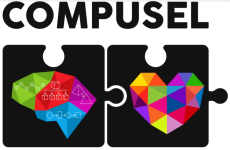Session 1 >>
OBJECTIVES
The students will be able to:
• maintain positive self-awareness
• demonstrate reflection skills
• analyze the positive and negative aspects of personal behaviour
• differentiate their emotional states;
• show a desire for self-improvement
• be aware of the importance of moral values and to be able to make moral choices in different situations
TITLES & CONTENT
Reflection of personal moral standards
Humane and compassionate attitude towards other people
Make the right choice in life
Examples of real-life experiences
TEACHING/LEARNING PROCESS
Situation:
Students watch a video of how two friends, walking to school, see that their peers are mocking a puppy. One of them goes further, saying that they might be late for class, and the other boy stands up for the animal, realizes that the puppy is hungry and gives him his sandwich, although he realizes that he will be hungry.
Class Discussion- Students discuss the story with the teacher, who directs their attention to the goals of the lesson, and introduces them to the concept of "personal values" as the basis of a person's self-awareness.
Decomposition:
Class Discussion- Leading students to decompose the problem through questions such as:
What is the problem in this story?
Who is/are causing the problem?
How did the two friends behave themselves in the above-mentioned situation?
Abstraction: Worksheet 1 - students need to analyze and indicate on the worksheet the positive and negative sides of the behaviour of both friends..
Discussion. Students discuss the completed task and highlight key aspects of the story.
Pattern Recognition:
Examples of Real-Life Experiences
Students are offered to recall and tell about those situations in which they helped other people, as well as situations in which someone helped them. During the discussion, the teacher focuses on the fact that when a person not only receives help but also assists someone, that is, sympathizes with his neighbour, he has pleasant feelings (feelings of empathy, self-confidence, pride, self-respect). Completing this task allows you to evoke positive feelings in teenagers when they recall situations when they sympathise with another person.
Algorithmic Thinking: students will have to write step by step how they would behave in the situation they saw in the video, as well as clearly describe the factors that would encourage them to choose one or another model of behaviour.
Closure
Summarization
The teacher presents the students with a poster depicting the starry sky and explains that everyone can choose stars of different colours, which will represent their opinion about the benefit received from the class: yellow - very useful, while - I didn't care, blue - not useful at all. Each of the participants approaches the poster in turn and attaches the chosen star. At the end, it is suggested to take a photo under the starry sky.
